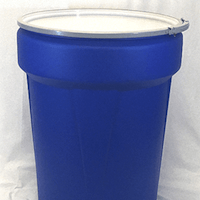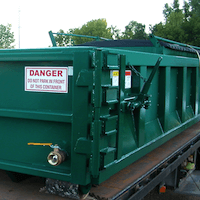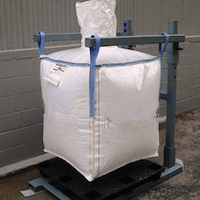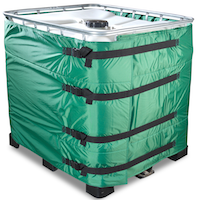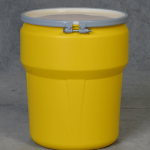Bio Remediating Hydraulic Oil Spills
An Overview of Success in Substantially Reducing Costly Hazardous Waste Streams and Cleanup Expenses Using Oil Sponge
In 1998, A Major Southwestern Metropolitan Area City and their Environmental Resources Department undertook a study to identify areas of the City where substantial cost outlays were occurring for cleanup of Spilled Hydraulic Oils from City trucks and equipment using commercial spill cleanup companies.
2018 Update: The City has through all these years continued to enjoy the economic and environment benefits of Remediating Oil Contaminated Soils using Oil Sponge.
These spills occurred whenever there was an accidental or unavoidable breakage of hydraulic lines or leakage in hydraulic systems or other oils on sanitation trucks and on heavy equipment at the City landfill.
Following the study, it was estimated that the costs of spill cleanup and waste disposal on spills of less than 30 gallons was in excess of $60,000 annually.
Since these spills were considered “hazardous”, they had to be properly documented in accordance with EPA and the Arizona Department of Environmental Quality Regulations (ADEQ). The spill cleanup had to be handled through a TSD facility for disposal. All this was very costly and time consuming.
A decision was made by City Management to search for remedies that could better utilize City resources, substantially reduce costs and reduce the chain of custody for hazardous materials; clearly stating to the community that an environmentally friendly approach was and is a high priority and is routinely in the forefront to reduce costs while cleaning up the environment.
Situations and Solutions
The City Environmental Resources Department has an ongoing program to specifically identify environmental issues throughout the City. They continuously work on a daily basis to determine where those areas of concern might be modified, improved, minimized or eliminated through programs, projects, employee and community awareness, new processes or technologies, alternative solutions, products or equipment.
Hydraulic Oil Spills Remediation
Not satisfied that the situation as it was in 1998 was the best solution, they were determined to identify a remedy.
Members of the City’s Environmental Resources Department ‘s Staff attended the Luke Air Force Base “Partnership for Pollution Prevention”, an environmental conference for waste minimization. The conference was sponsored jointly by the ADEQ and various military facilities throughout Arizona.
While at the conference, it was noted that in the mini trade show and product display (local vendor were displaying their products), one of the exhibitors was an Arizona based global distributor demonstrating a fully biodegradable product called Oil Sponge Remedial™. The product contained very high populations of hydrocarbon eating (digesting) microbial cultures.
Their presentation exhibited the product rapidly absorbing spilled oil. The presentation went on to thoroughly discuss how the populations of the “HC” (Hydrocarbon) Microbes eat and digest the hydrocarbons, leaving only the biodegradable cotton and pecan pith based product, and waste by-product from the microbes, Carbon Dioxide and Water.
Following the conference, a decision was made by the City to begin testing “Oil Sponge Remedial™” to determine if it was a viable alternative product to:
- Eliminate or reduce a waste stream
- Reduce or eliminate the non-biodegradable absorbents presently being used.
- Provide a means to substantially reduce hydrocarbon contamination, cleanup and disposal.
Initial tests successfully determined the “Oil Sponge Remedial™” does readily and rapidly absorb spilled hydrocarbons. The next question was: “would “Oil Sponge Remedial™” significantly reduce the presents of hydrocarbon contaminants to a point that the absorbent materials could be disposed of in an economical manner?”
A decision was made to “establish a profile”. Hydrocarbon testing was done on samples of spilled hydraulic oil encapsulated in “Oil Sponge Remedial™” (now considered a “Waste Media”) that had been placed in a 55-gallon drum following a spill. (Refer to Note #1)
The samples were sent to a local laboratory for testing for petroleum characteristics.
The laboratory performs either an 8010 or an 8020 test for TPH (Total Petroleum Hydrocarbons) as well as the Arizona test for TRH (Total Renewable Hydrocarbons), the 418.1 test. On these initial tests, the TPH showed “892 PPM.”
Following the initial test and after a 30-day remediation period of the oil contaminated Oil Sponge, samples of that remediated “waste media” were tested at the laboratory using an identical protocol to the initial test.
The results were spectacular; TPH levels had been reduced to 137PPM in a little over 30 days. This is significant in that the results indicated a “non-detect” or below detection levels or ND “non-detected” and therefore non-hazardous.
A “Profile” had been established specifically for this type of oil (hydraulic fluid), this type of spill and the process thoroughly documented.
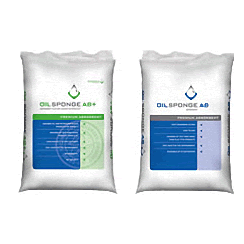 The completed information package was submitted to ADEQ Solid Waste Division for a “Waste Review”. It was determined that this procedure satisfied all requirements as a “non-hazardous waste”.
The completed information package was submitted to ADEQ Solid Waste Division for a “Waste Review”. It was determined that this procedure satisfied all requirements as a “non-hazardous waste”.
The Procedure Simplified:
- Absorb hydraulic oil spill using “Oil Sponge Remedial™”
- Pick up oil spill
- Place in drum(s) or in rows on plastic for remediation of larger quantities
- Rotate soils frequently for aeration and mixing
- Wait approximately 30 days
- Assure that the procedure has been thoroughly followed and specifically falls within the waste profile guidelines
- Send to landfill for disposal as “Non-Hazardous”
Spill Requirements
ADEQ must still be notified if spills and the cleanup and disposal methods are being used. The spill must fall within the guidelines of the waste profile; meet all profiled processes and criteria for non-hazardous disposal after approximately 30 days or more on occasion. If any part of the profile changes, a new profile must be submitted. A new profile must be submitted if the liquid (contaminant) being addressed changes as well.
CONCLUSIONS AND RESULTS
The City has dramatically reduced disposal costs by over $50,000 annually since the first year of the program.
This program now allows City personnel to be highly selective on any hydrocarbon spills, to determine how spills should be addressed or if too large, whether or not to assign the cleanup to an outside firm.
At the present, experience has shown that the majority of the spills are small enough that they can be completely addressed and handled by city personnel.
Note
Recommendation: Oil Sponge Remedial™ should have the addition of water (kept moist but not soaked) to the waste oil mixture to accelerate the multiplication and effectiveness of the microbes in the Oil Sponge Remedial™. It is further recommended that the contents in a bag of Oil Sponge Remedial™ be homogenized to insure an even distribution of the microbes prior to using.
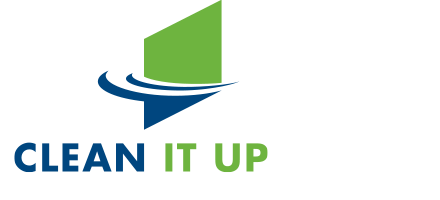
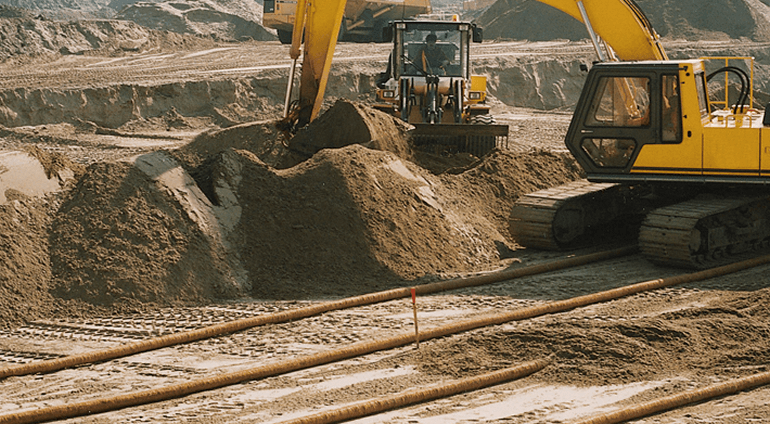

 P.O. Box 8149
P.O. Box 8149